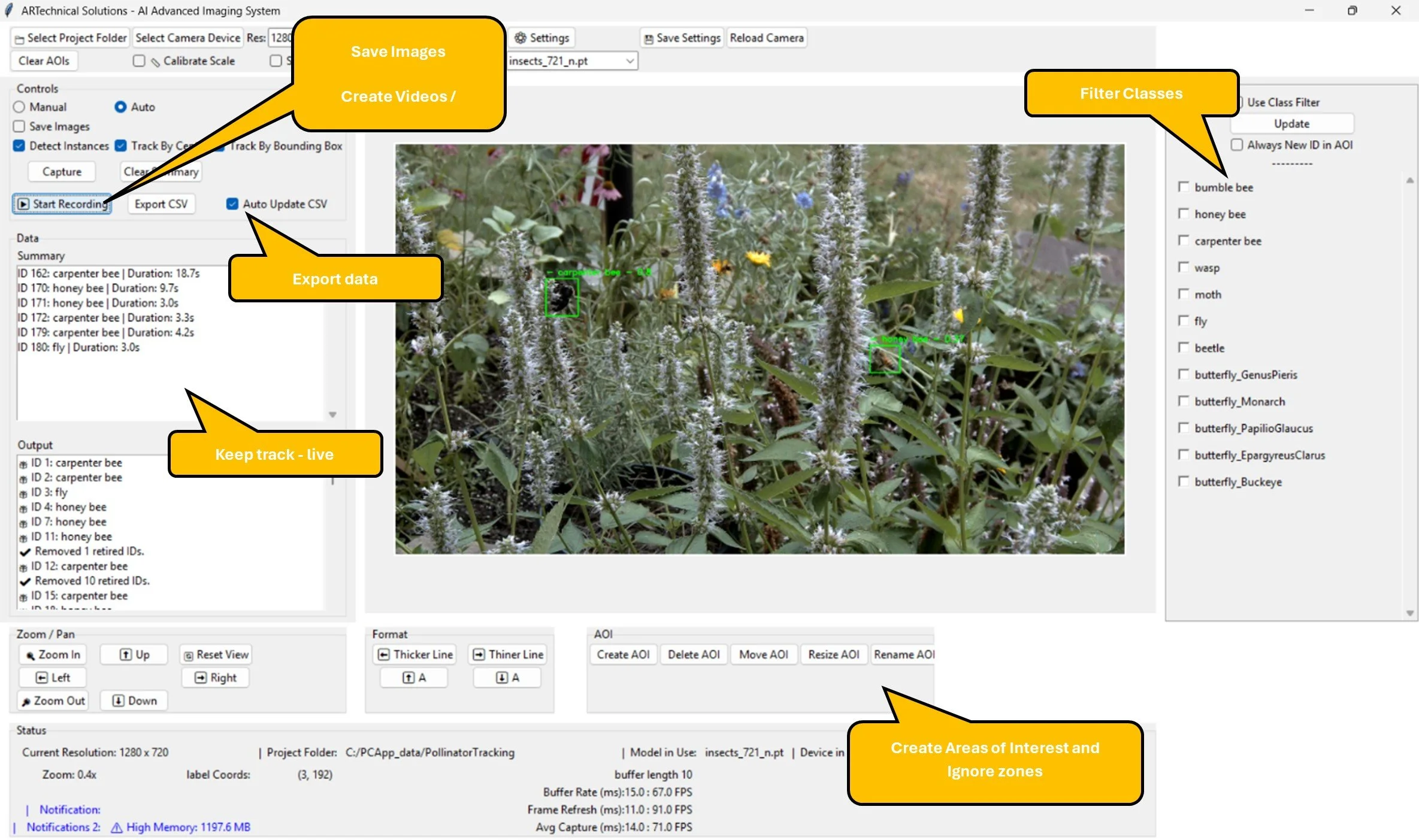🌸 Help Us Help the Pollinators! 🌼
Why Pollinators Matter
Pollinators like bees, butterflies, and beetles are essential for a thriving ecosystem and a productive garden. But how many are visiting your garden? When? Which species? With your support, we can find out—together.
🌼 Benefits
Data-Driven:
Automatically identifies and counts pollinators while exporting structured data to support analysis, planning, and long-term tracking.
Community Engagement:
Transforms gardens and parks into interactive spaces that encourage public participation and raise awareness of local pollinator activity.
Educational Value:
Offers a hands-on tool for teaching biology, species identification, AI applications, and data literacy in classrooms and garden programs.
Environmental Stewardship:
Enables communities to monitor pollinator health, support habitat planning, and make data-informed sustainability decisions.
Research and Academic Collaboration:
Customizable to support specific dataset needs and train in new species.
How It Works
The Pollinator Census System is designed to be simple to set up, easy to use, and powerful in what it delivers. Here's how it works from start to finish:
Setup the Camera
A compact camera is installed in a garden or green space, positioned to capture pollinator activity on flowering plants.Capture Pollinator Activity
The system automatically captures images or video during active daylight hours, depending on settings and schedule.AI-Based Species Detection
Images are processed using a trained machine learning model to detect, count, and label pollinator species in real time.Visualize and Save Results
Detections are shown with bounding boxes and species names, and data is saved locally—including image files and.csvdata logs.Use the Data for Insight and Action
Collected data can be used for education, habitat planning, grant reporting, or long-term monitoring—all tailored to community or research needs.
